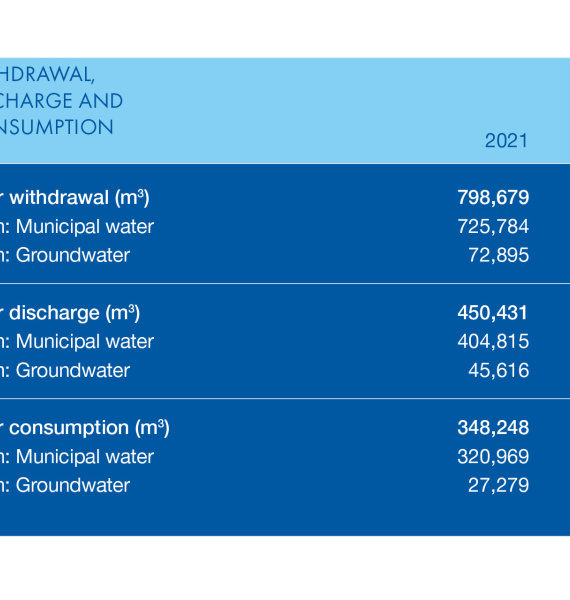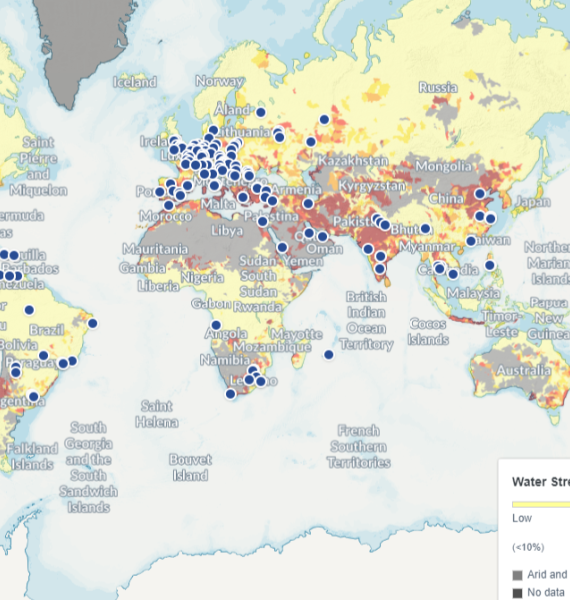Water management
We acknowledge the importance of water as a vital resource and endeavour to use it efficiently and responsibly, even though our packaging production operations involve limited water usage (the relevance of water is higher in our recycling operations, as water is used there for washing the input material).
We primarily source (fresh) water from municipal sources and, in some of our facilities, from our own wells. This combination of water sources helps us ensure a consistent supply while considering local water availability and sustainability.
We are dedicated to complying with all relevant water usage regulations and standards, and we closely monitor the quality of the water we use and discharge, aiming to prevent any negative impact on the environment or communities around our facilities. Through regular assessments and testing, we ensure that our water usage aligns with established guidelines.
Recognising the significance of responsible water management, we set a water reduction target in 2018. Our objective was to achieve a 20% reduction in water consumption by the end of 2022. We approached this goal with a focus on optimising our processes and implementing efficient technologies. This reduction initiative was undertaken as a part of our commitment to safeguarding water resources and minimising our environmental footprint. As of 2022, our freshwater consumption had decreased by 6%, despite the growing number of plants and recycling facilities.



